191 Blu-ray / Auryn’s Haydn: op. 77, 103, 42
Description
"In rapid succession, the Stuttgart label TACET has completed the recording of all the String Quartets of Joseph Haydn with the Auryn Quartet. With the last volume, coupling the two Quartets of Op. 77 and the individually published Opuses 103 and 42, we now have all the Haydn Quartets in an exemplary and thrilling complete recording. (...) Full of sustainable substance both in strong-willed forte and in the most tender pianissimo, fascinatingly impeccable in their intonation and completely balanced in terms of sound, one experiences the Auryn Quartet here, once again, as a top-class ensemble." (Klassik heute)
2 reviews for 191 Blu-ray / Auryn’s Haydn: op. 77, 103, 42
You must be logged in to post a review.

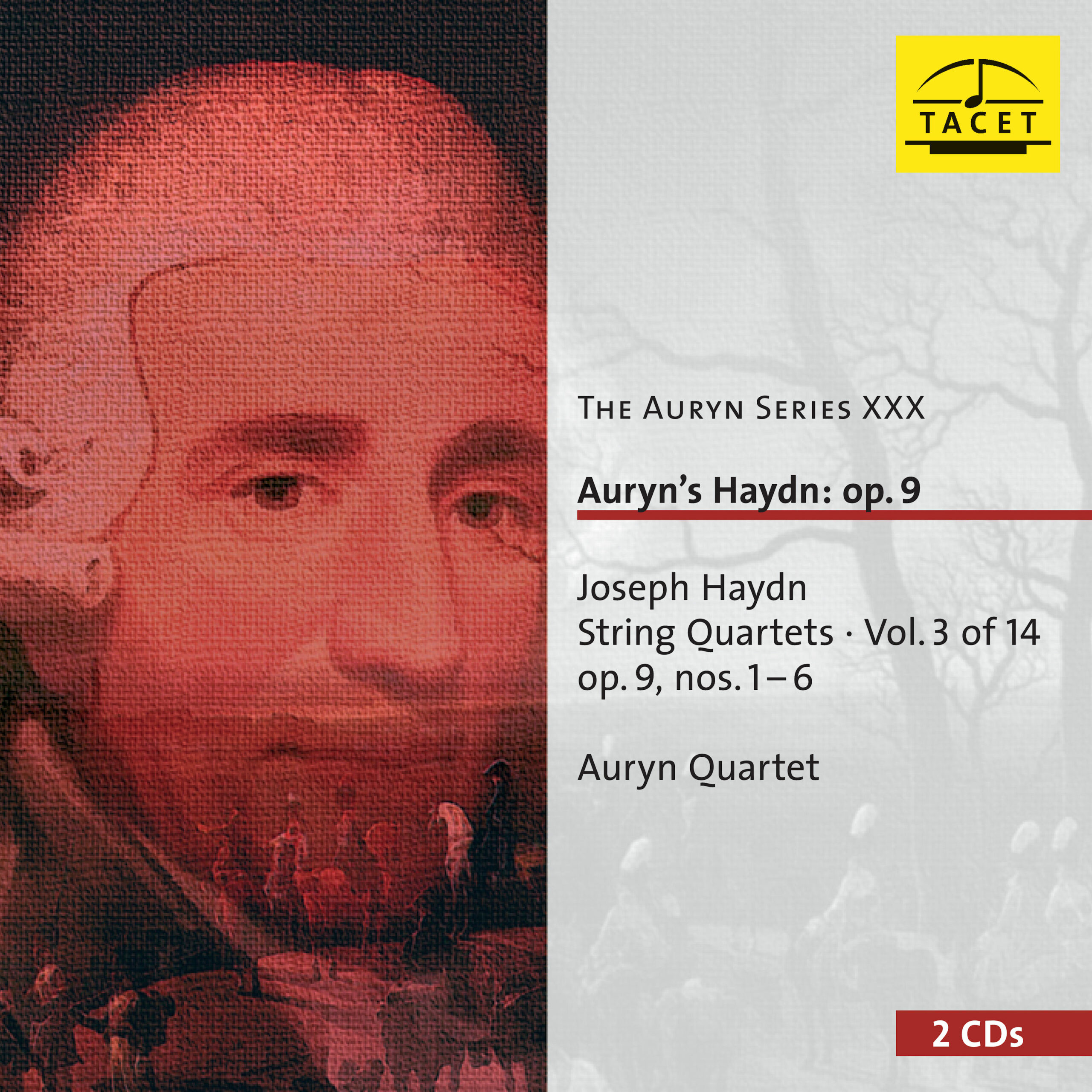
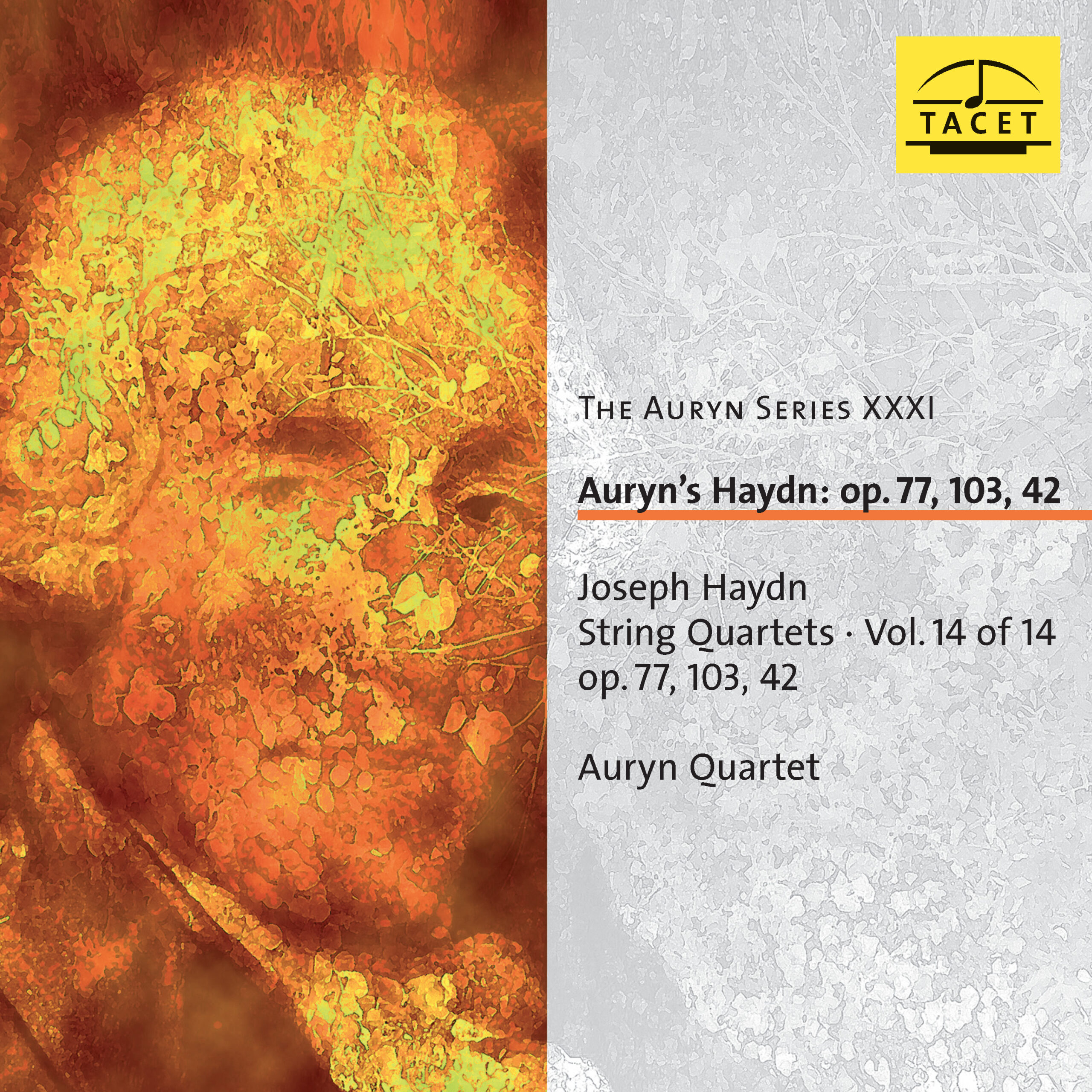
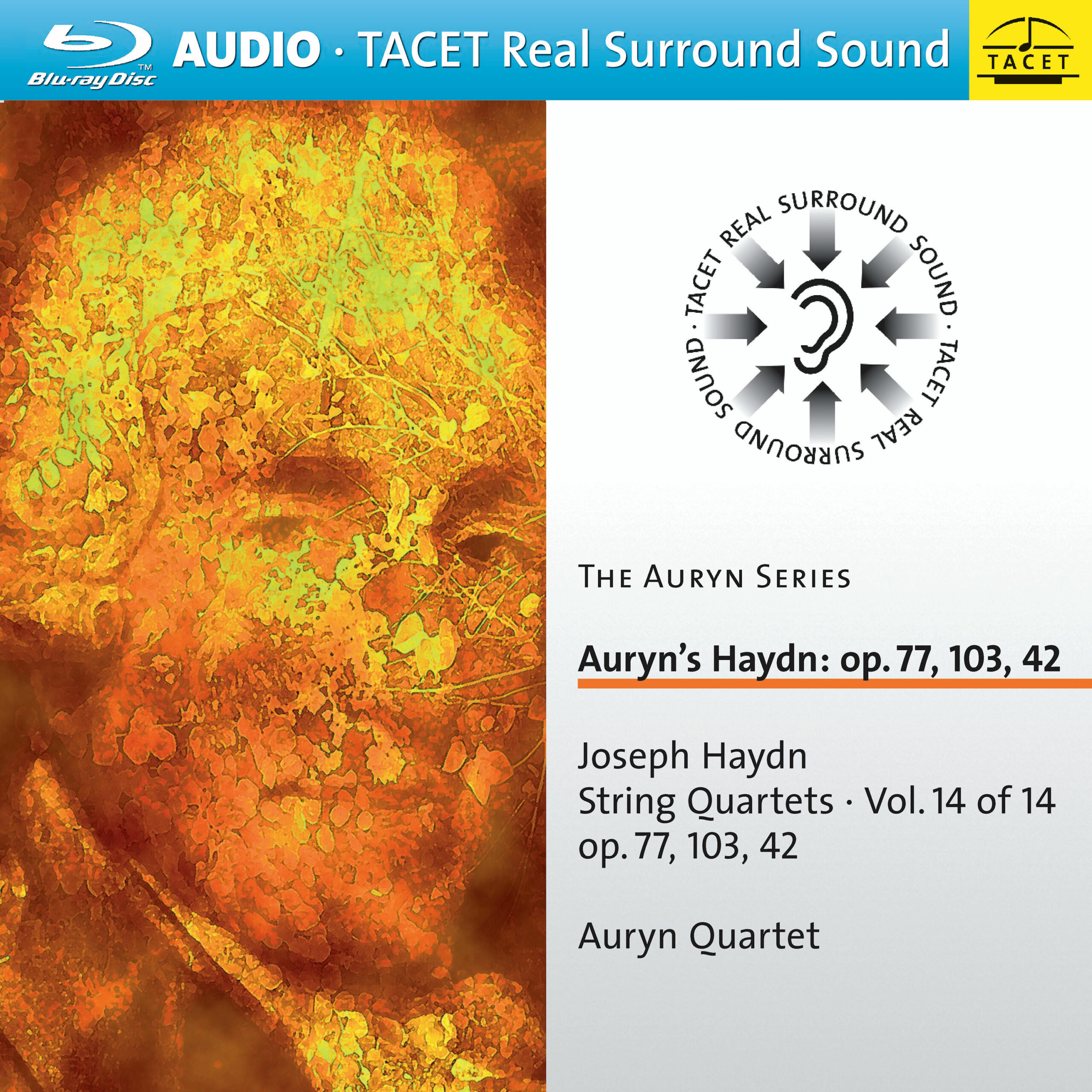
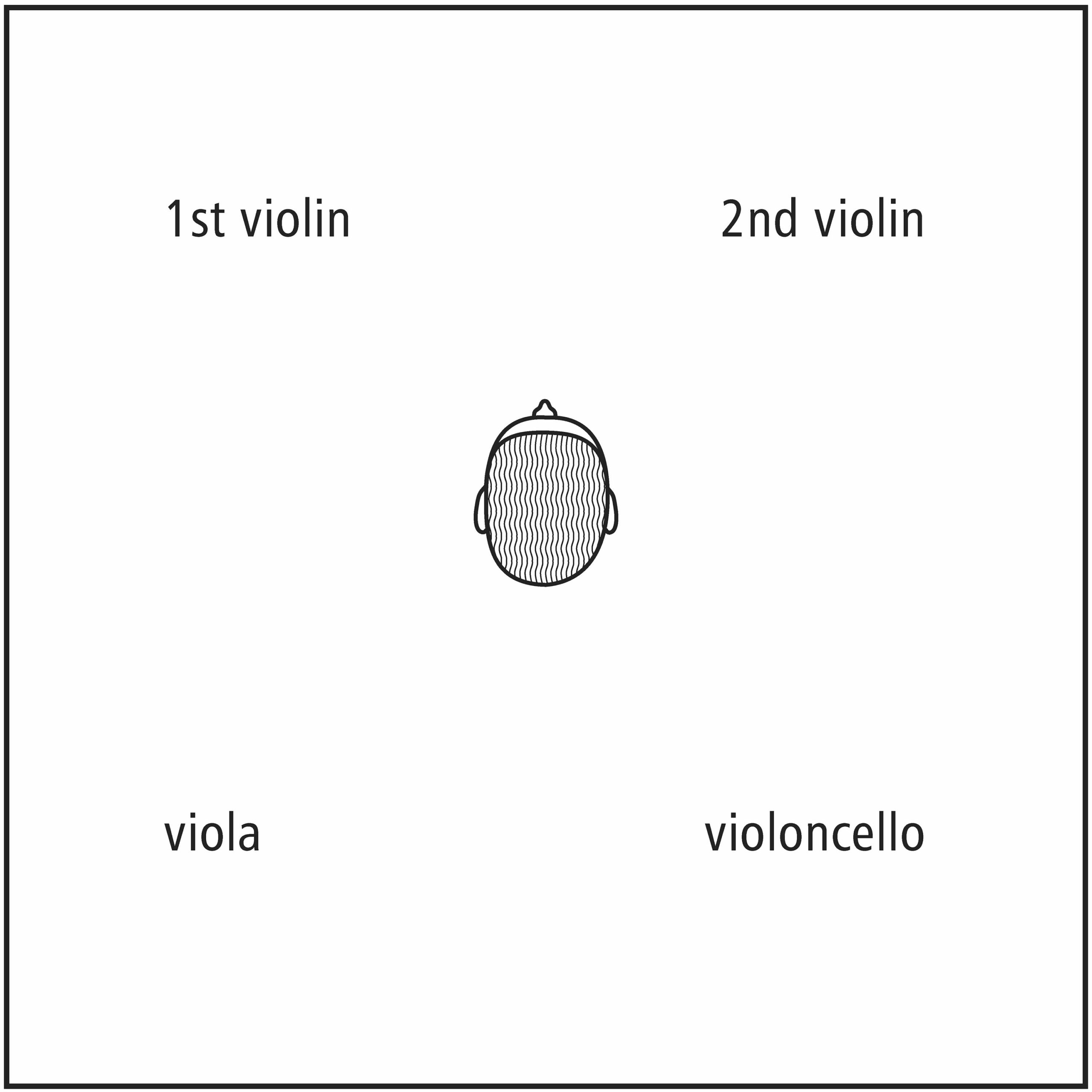
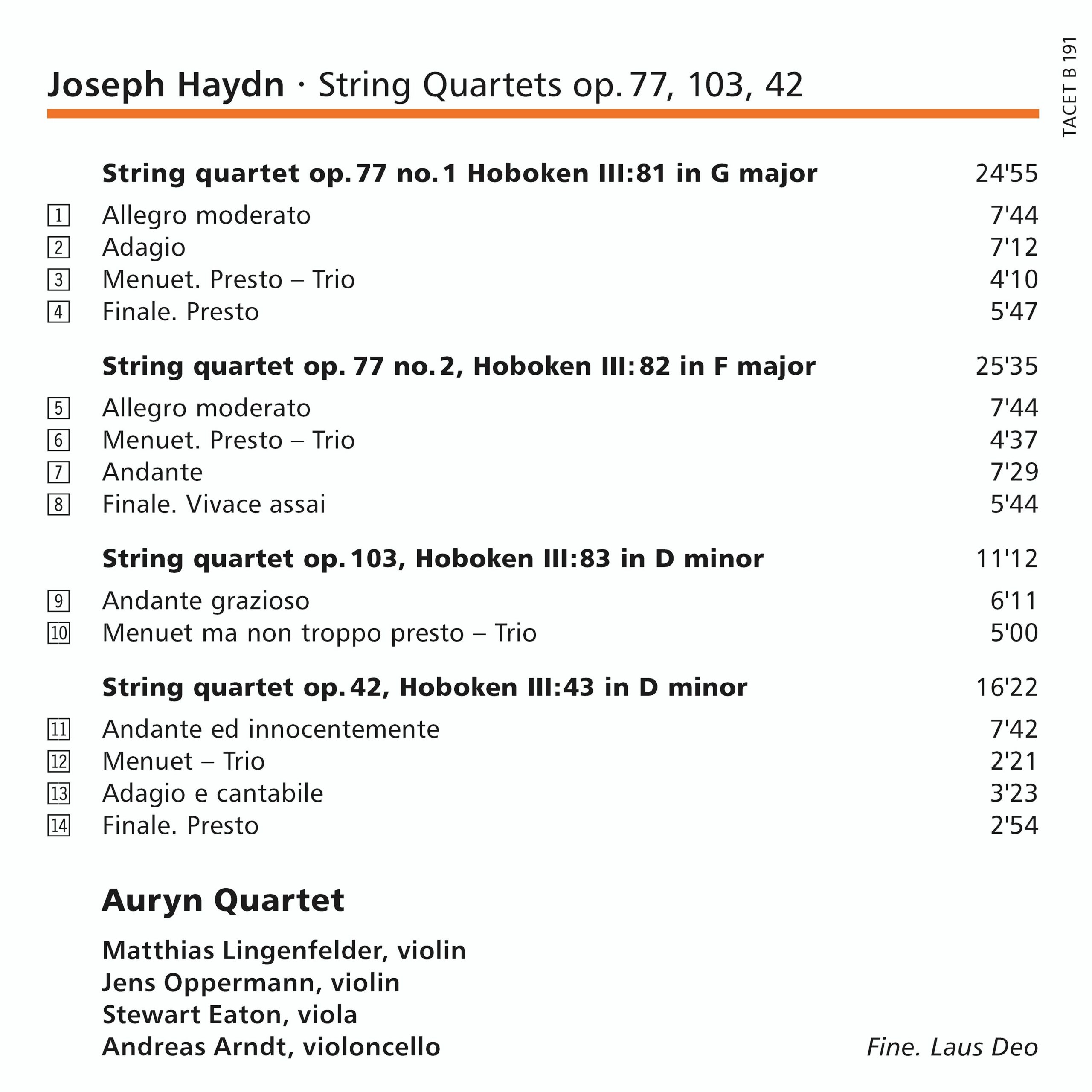
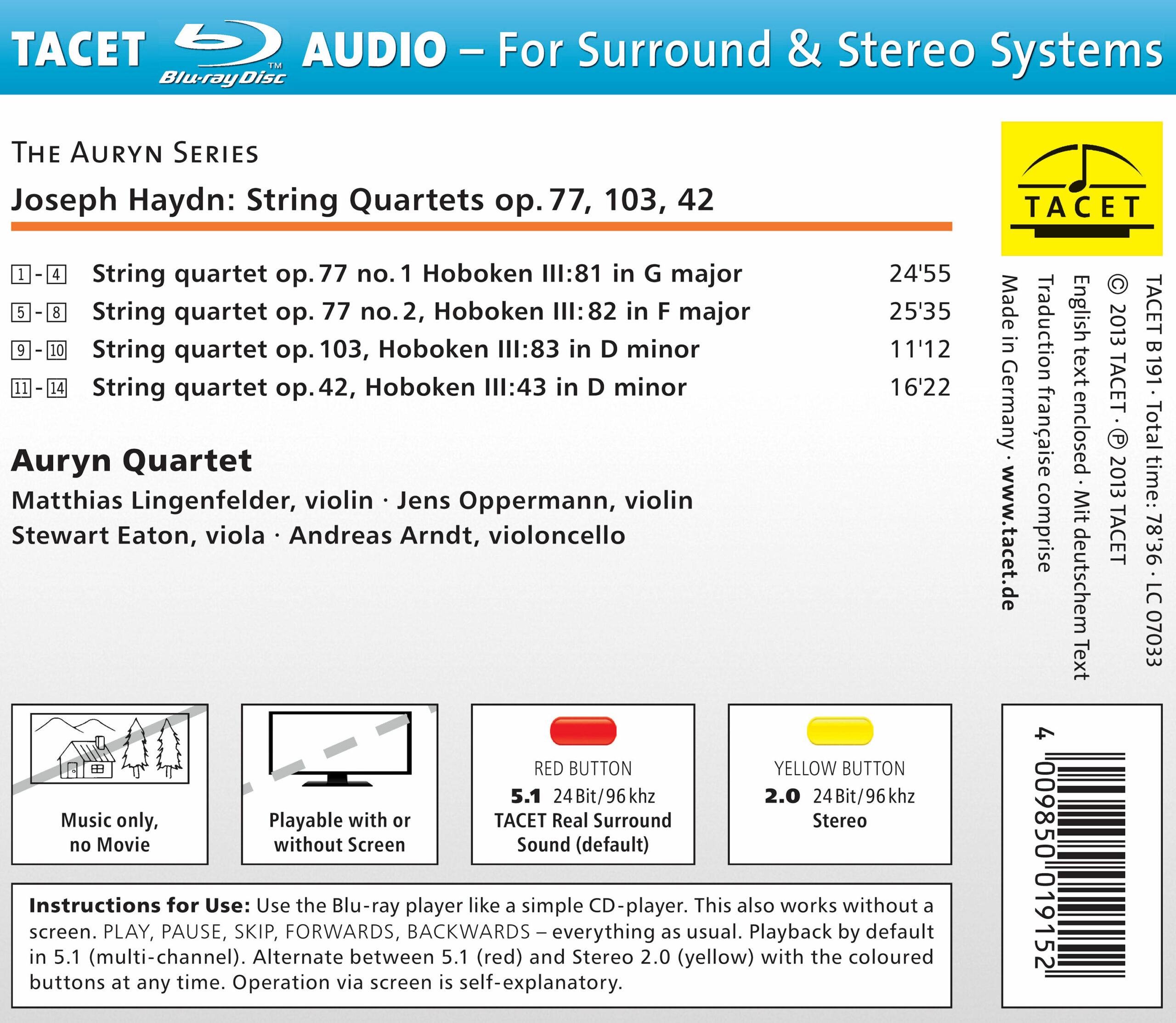
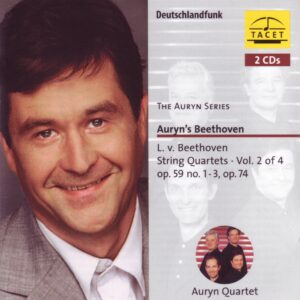
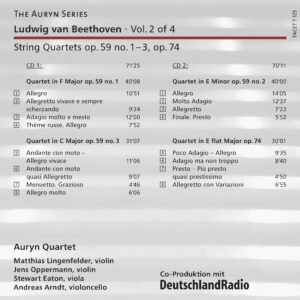
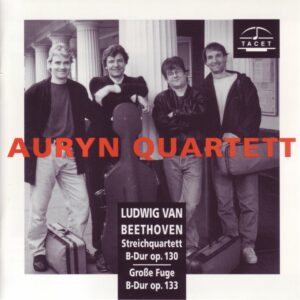
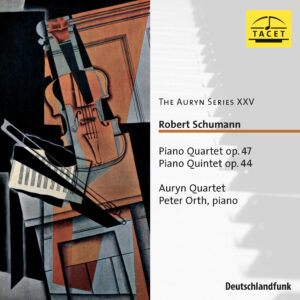

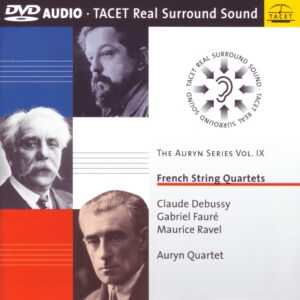
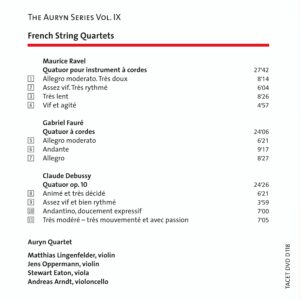
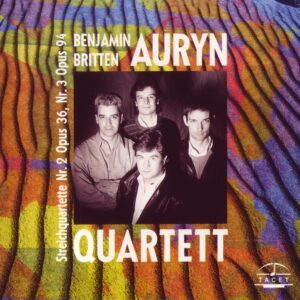
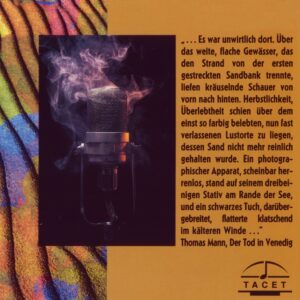
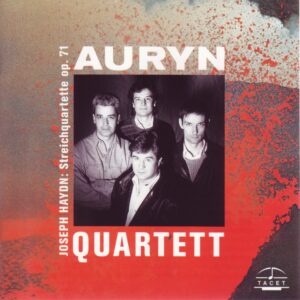
Sächsische Zeitung Dresden –
Right in the middle there instead of just
How can music be brought even closer to listeners? TACET is the German record company that most persistently experiments with all kinds of sound discs. In addition to stereo media CD and LP, the audiophile label offers SACD, DVD-Audio, and Blu-ray Audio with multichannel surround recordings. The Blu-ray is used on the home theater system and allows a choice between two-channel and six-channel versions. It has space for about two and a half hours of music. The screen shows only the tracklist, so it can remain dark. However, the music fills the room in an unprecedented way. Following Mozart with the wind serenade known as "Gran Partita" and Ravel including Bolero, Pavane, and Tzigane, TACET now presents the multi-award-winning cycle of Haydn's string quartets. The latest release includes the six masterpieces of Opus 76, including the so-called Emperor Quartet: The listener sits between the instruments, with the violins in front, viola and cello behind. Unless, of course, the listener turns around. Here, the customer is literally an emperor.
Jens Sommerschuh
Audiophile Audition –
--> original review
Mel Martin covered the first Blu-ray issue of these quartets recently. He mentioned that although ostensibly in 5.1 surround, only four speakers were actually used; I find that to be the case here as well, with each instrument assigned a separate—but not totally discrete—channel. There is a slight degree of spillover from each instrument into its neighbor’s space, making the experience far more holistic than say, those Istomin-Stern-Rose recordings on Columbia from the 1960s where the stereo channels seem completely blocked off from one another. (Actually they weren’t, it’s just that the miking was so close to each instrument that the effect was such.)
Martin also indicated that his four speakers were uneven in strength, the back ones smaller in size and “punch”. That is my setup as well, though I must confess that I am not noticing any corresponding lessening of volume from the cello and viola in the back of the room. Those lower instruments don’t have as much ability as the violins to dominate a sound spectrum anyway, so the resulting total sound balance appears to me as natural and as idiomatic a quartet sound as you might want. Of course, surround sound with four-speaker dispersion in strings is most decidedly not a natural sound—you would not hear it this way in a concert hall. But who cares? The feeling of being smack dab in the middle of a quartet is not an unpleasant one by any means, and there are no dictates handed down from on high that say any particular spatial setup is axiomatic to the enjoyment of these works. We know from history that orchestras and chamber ensembles organized themselves spatially in any number of ways, and Tacet’s proposals do nothing but add to the pleasure received in a fine surround sound experience.
Since I first came into contact with this series some years ago I have regarded it as among the best, perhaps even the best of the modern Haydn quartet recordings. Some are already on DVD-Audio (due partly to the longer playing times vs. SACD), and now the foray into Blu-ray makes them even more interesting, apart from the standard CD issues. Whether this lasts or not, we shall see—some of the majors such as Universal are starting to try this format as well, I guess hoping that the increasing number of Blu-ray players maybe will allow some further saturation of this niche market to penetrate previously impenetrable marketing segments. But the major labels are extraordinarily fickle about such things, their commitment surface-level only, so time will tell. Tacet is not a major label, but is a major player, and one hopes that their commitment to fine quality sound will not wane. These issues are a good sign.
As for the performances, both discs are superb. Volume 9 gives us really the second three of a set that comprises Opus 54 and 55, the sharp keys predominating in the former while the latter focuses on the flats. The big work here is the “Razor” quartet, so-called because Haydn said he would give his “best quartet” for a good English razor, whereupon one Mr. Bland ran out to get one, only to be rewarded with this quartet. It really didn’t happen that way—Haydn did get a razor, but through the mail! But this quartet is the greatest he created up through that point—1788—and its sturm und drang qualities, the only minor key in the set (F), make it absolutely memorable, and saying that considering the quality of Haydn’s catalog is really saying something. The other two are also fine works, but considerably more lightweight in style and affect, though still brilliant and exciting.
The last volume, No. 14, ends with a mélange of quartets that haven’t always fit into the more conventional schemas. The D-minor Op. 42, was composed in 1785 as a single commission, and though the piece has not proved as popular as those in the standard issue of “six” that Haydn so often created, it is a very complex work, not at all as difficult technically, but highly inventive and very witty. The Op. 76 quartets from 1797 set a high standard indeed—never had the string quartet enjoyed such masterly writing. Haydn was not through though; he intended to continue on with a commission from Prince Franz Joseph Maximilian Lobkowitz for another six, though it became apparent that his health was only going to allow the completion of two, which became his Op. 77. They show nothing of the physical ailments he was suffering at the time, and remain at the pinnacle of quartet writing.
The poignant Op. 103 was started in 1803, and by 1806 it became clear that he did not have the strength to complete the outer movements—only the two inner ones remained. “All my strength is gone; I am old and weak” he said. But his invention was not, and this short work, which he did allow to be published, is his swansong, not only for the quartet genre which he started and perfected, but the last piece of music he would write. Even as he said these words, Beethoven was busy writing his “Razumovsky” Quartets. The student would dovetail from the teacher, continuing the legacy.
As stated, the Auryn are masters at this music and play it with palpable affection and great commitment—you simply can’t do any better.
Steven Ritter